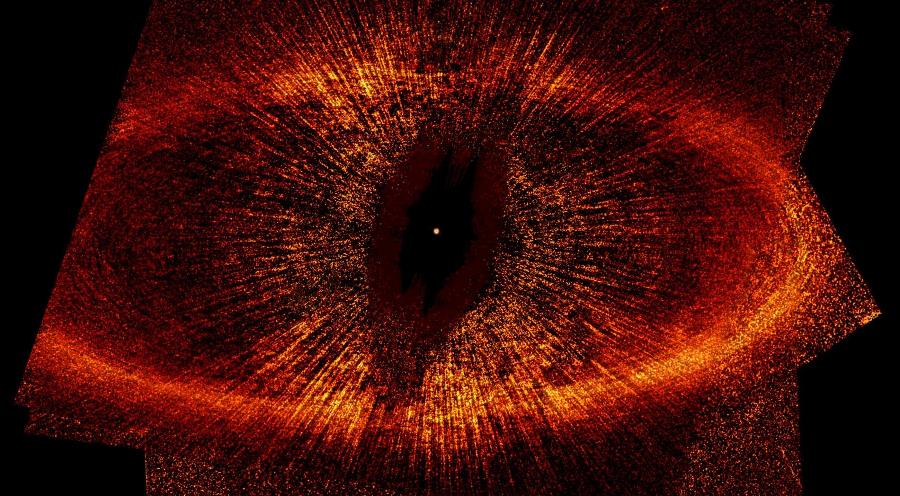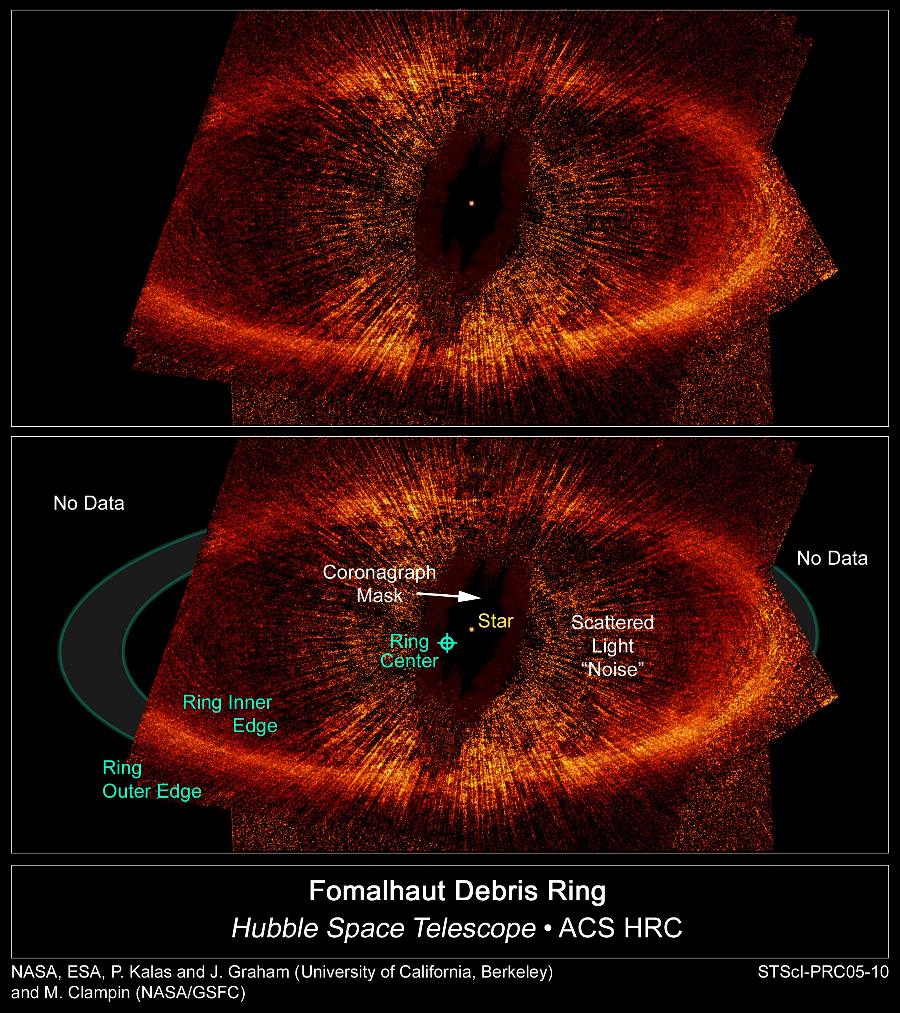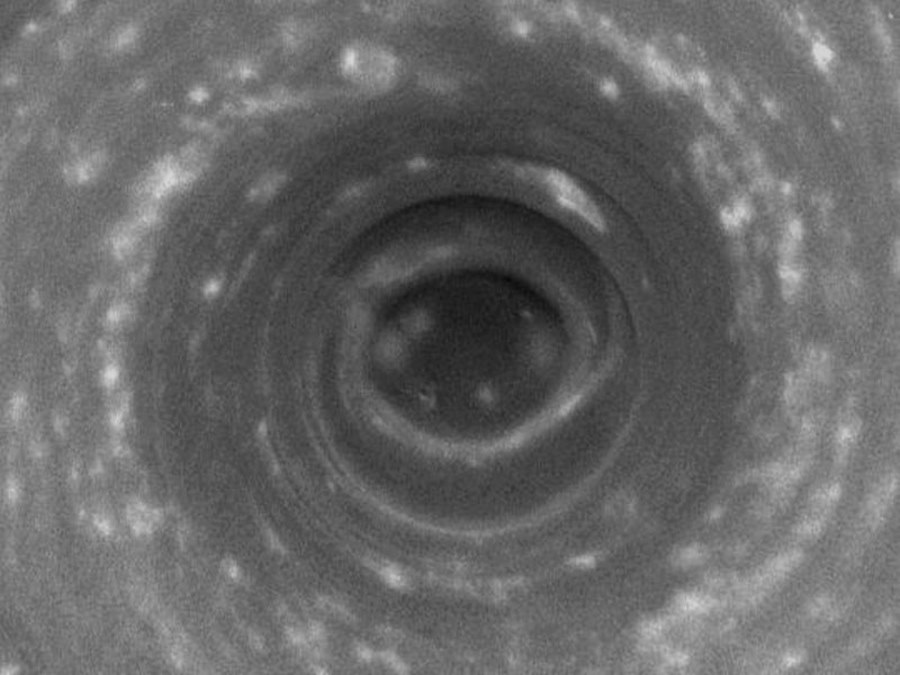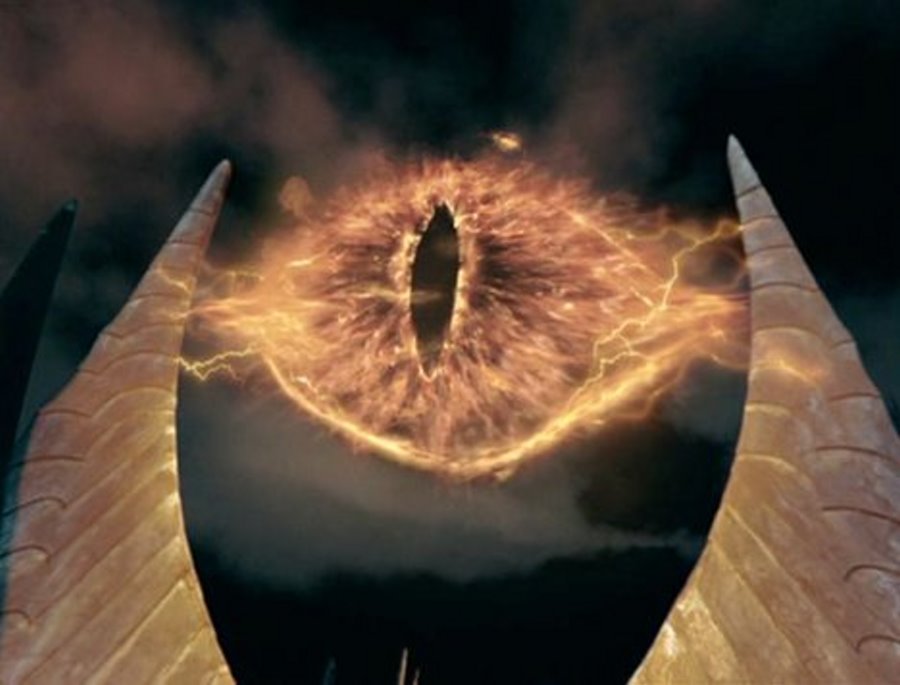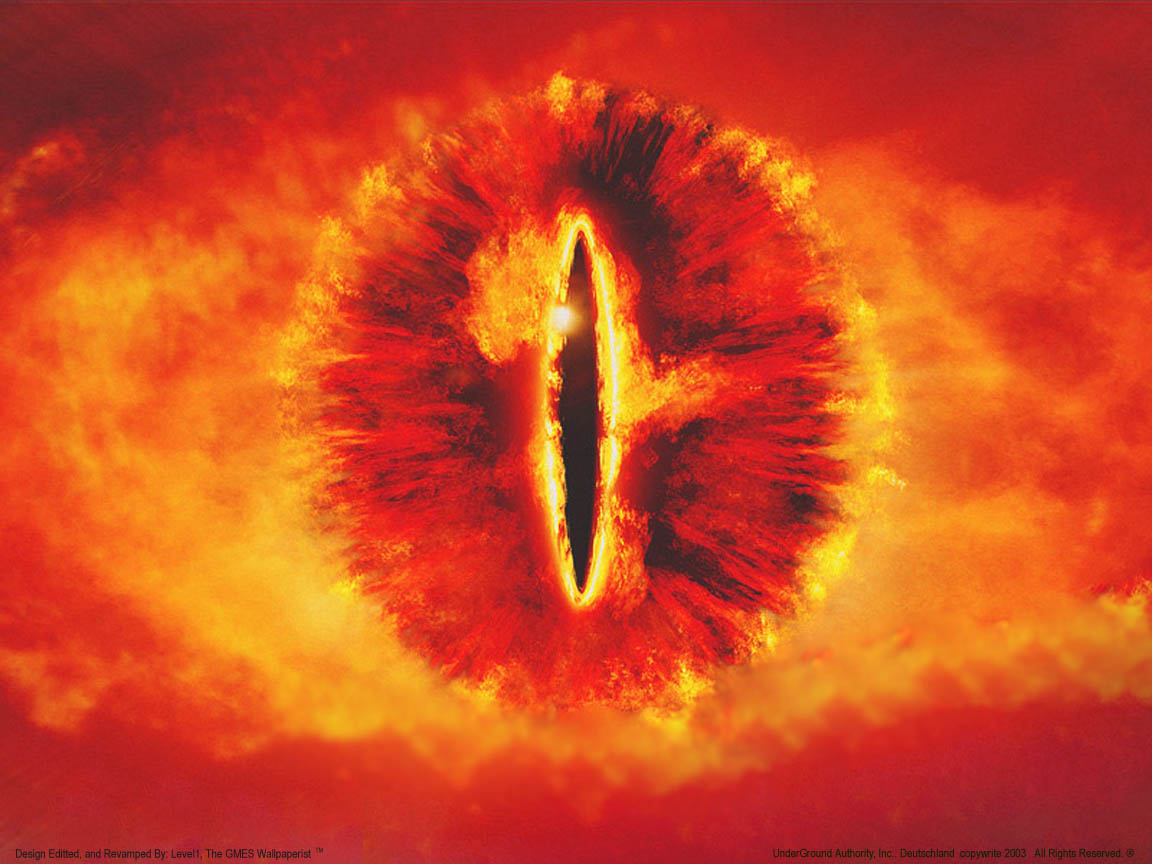|
|
|
|
Hubble Spies Lord of the Stellar Rings ..
Hubble Spies
Lord of the Stellar Rings A spectacular, luminous ring offers the best evidence yet that a nearby star is circled by a newly formed solar system. The ring is composed of dust particles in orbit around Fomalhaut, a bright star located just 25 light years away in the constellation Pisces Australis – or the Southern Fish. A recent image captured with the Hubble Space Telescope - which makes the system look uncannily like the Great Eye of Sauron from the blockbusting Lord of the Rings trilogy - confirms that Fomalhaut’s ring is curiously offset with respect to the star. The most likely explanation is that the gravity of one or more unseen planets is dragging the ring askew. The fact that the inner edge of the ring is relatively well-defined adds further weight to the argument because it suggests the unseen planets are sweeping up stray dust within the radius of the ring. The image was captured by astronomers at the University of California, Berkeley, US, and NASA’s Goddard Space Flight Center using Hubble’s coronagraph. This device blocks the glare of a star while gathering the faint reflected light from any surrounding ring. The new image
is the first time Fomalhaut’s ring has been seen
in visible light. This offers a much sharper view
than the infrared wavelengths previously used by
astronomers. “We are directly imaging the system,”
says team member Paul Kalas. “The offset is
unambiguous and it’s been measured with very high
accuracy.” Astronomers suspect the ring around Fomalhaut is the dusty trace of a belt of small comet-like bodies that surround the star, much like the Kuiper Belt that surrounds our solar system. Frequent collisions between these bodies generate enough dust to replenish the ring, which would otherwise be eroded by the star’s radiation in a relatively short time. Since the Kuiper Belt is a by-product of the creation of our solar system, the ring around Fomalhaut may be similarly linked to planet formation. And because Fomalhaut is only 200 million years old - less than 5% of the Sun’s present age - it offers a unique analogue of our solar system’s early years. While strengthening the case for planets around Fomalhaut, the Hubble image also appears to limit their size. “Fomalhaut is young and any planets that formed around it have yet to cool. Anything larger than about five times the mass of Jupiter would still be glowing warm enough to show up in our image,” says Kalas. He and his colleagues have already booked time on the Hubble to do follow-up observations later in 2005. They hope to search for small details such as gaps or clumps in the rings that could reveal more precisely the masses and locations of any planets. |
|
|
Debris Ring Around Star Fomalhaut (HD 216956) ..
Debris Ring Around Star Fomalhaut (HD 216956) ABOUT THIS IMAGE: The top view, taken by NASA's Hubble Space Telescope, is the first visible-light image of a dust ring around the nearby, bright young star Fomalhaut (HD 216956). The image offers the strongest evidence yet that an unruly planet may be tugging on the dusty belt. The left part of the ring is outside the telescope's view. The ring is tilted obliquely to our line of sight. The center of the ring is about 1.4 billion miles (15 astronomical units) away from the star. The dot near the ring's center marks the star's location. Astronomers believe that an unseen planet moving in an elliptical orbit is reshaping the ring. The view at bottom points out important features in the image, such as the ring's inner and outer edges. Astronomers used the Advanced Camera for Surveys' (ACS) coronagraph aboard Hubble to block out the light from the bright star so they could see the faint ring. Despite the coronagraph, some light from the star is still visible in this image, as can be seen in the wagon wheel-like spokes that form an inner ring around Fomalhaut. The suspected planet may be orbiting far away from Fomalhaut, near the dust ring's inner edge, between 4.7 billion and 6.5 billion miles (50 to 70 astronomical units) from the star. Only Hubble has the exquisite optical resolution to resolve that the ring's inner edge is sharper than its outer edge, a telltale sign that an object is gravitationally sweeping out material like a plow clearing away snow. The ring is in the Fomalhaut system's frigid outer region, about 12 billion miles (133 astronomical units) from the star. This distance is much farther than our outermost planet Pluto is from the Sun. The ring's relatively narrow width, about 2.3 billion miles (25 astronomical units), indicates that an unseen planet is keeping the ring from spreading out. Fomalhaut, a 200-million-year-old star, resides 25 light-years from the Sun in the constellation Piscis Austrinus (the Southern Fish). The ring is tinted red for image analysis. The Hubble observations were taken over a five-month period in 2004: May 17, Aug. 2, and Oct. 27. SOURCE: Hubble Space Telescope |
|
|
A Hurricane Over the South Pole of Saturn ..
A Hurricane Over the South Pole of Saturn Explanation: What's happening at the south pole of Saturn? To find out, scientists sent the robot Cassini probe now orbiting Saturn directly over the lower spin axis of the ringed giant. Cassini found there a spectacular massive swirling storm system with a well developed eye-wall, similar to a hurricane here on Earth. One image of the storm is shown above, while several frames from the overpass have been made into a movie that shows the huge vortex rotating. The storm is slightly larger than the entire Earth and carries winds that reach 550 kilometers per hour, twice the velocity of a Category 5 hurricane. This pole vortex on Saturn might have been raging for billions of years and is not expected to drift off the pole. SOURCE: NASA APOD |
|
|
From "Lord of the Rings" by J.R. Tolkien ..
|
|
|
Artist's rendering of "The Eye of Sauron" ..
|
|
| FAIR USE NOTICE: This page contains copyrighted material the use of which has not been specifically authorized by the copyright owner. Pegasus Research Consortium distributes this material without profit to those who have expressed a prior interest in receiving the included information for research and educational purposes. We believe this constitutes a fair use of any such copyrighted material as provided for in 17 U.S.C § 107. If you wish to use copyrighted material from this site for purposes of your own that go beyond fair use, you must obtain permission from the copyright owner. | |
|
|
